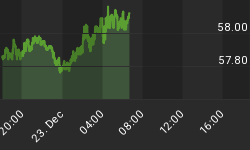Because apparently the world isn't complex and scary enough, the major powers have decided to unveil a bunch of "superweapons" capable of, um, unique kinds of mayhem:
Russia reveals giant nuclear torpedo in state TV 'leak'
The Kremlin says secret plans for a Russian long-range nuclear torpedo - called "Status-6" - should not have appeared on Russian TV news. The leak happened during a report on state-run Channel One about President Vladimir Putin meeting military chiefs in the city of Sochi. One general was seen studying a diagram of the "devastating" torpedo system.
Launched by a submarine, it would create "wide areas of radioactive contamination", the document says. The "oceanic multi-purpose Status-6 system" is designed to "destroy important economic installations of the enemy in coastal areas and cause guaranteed devastating damage to the country's territory by creating wide areas of radioactive contamination, rendering them unusable for military, economic or other activity for a long time", the document says.
According to state-run Rossiiskaya Gazeta, the destructive power attributed to the new torpedo's warhead would fit the description of a cobalt bomb. That would be a type of thermonuclear warhead with a layer of cobalt-59, which on detonation would be transmuted into highly radioactive cobalt-60 with a half-life longer than five years.
A warhead of up to 100 megatons could produce a tsunami up to 500m (1,650ft) high, wiping out all living things 1,500km (930 miles) deep inside US territory - Konstantin Sivkov, Russian Geopolitical Academy. Such a weapon would guarantee "that everything living will be killed", the paper said - there would not even be any survivors in bunkers.
"It's true some secret data got into the shot, therefore it was subsequently deleted," said Mr Putin's spokesman Dmitry Peskov. "In future we will undoubtedly take preventive measures so this does not happen again."
DARPA's Unmanned Submarine Stalker Could Change Naval Warfare Forever
There is no doubt about it: the US Navy has a big problem with small and relatively cheap submarines. China in particular has a rapidly expanding sub fleet, while Russia continues to slowly revamp theirs. Meanwhile, Air Independent Propulsion (AIP) technology has allowed foreign nations to field relatively inexpensive and extremely silent diesel submarines. This gives even bad actors that were once economically and technologically limited to fielding standard diesel submarines that need to surface regularly to recharge their batteries a near-nuclear submarine-like capability; these subs can stay submerged for weeks at a time and are very hard to detect and track. AIP diesel submarines are a 75% solution at 20% of the cost and are ideally suited for regional powers with anti-access ambitions.
Enter DARPA, Office of Naval Research and Leidos Labs ACTUV concept, a possible solution for persistently tracking enemy submarines, especially the diesel AIP kind, with maximum affordability in mind. The unmanned and highly autonomous ship's design is largely based around a series of plug-and-play modular components. The Sea Hunter's high-frequency sonar systems will also be able take a synthetic 'picture' of the sub's target so that Sea Hunter's computers can help classify and identify it by comparing the target to images and sound signatures stored in its memory banks. Its satellite and line-of-sight data-links will provide situational awareness to controllers thousands of miles away, as well as connectivity with other sub hunting assets such Navy's new MQ-4C Triton drone and MH-60R Seahawk helicopters.
Its Russian makers say it is a 'fundamentally new electronic warfare system' which can be mounted on ground-based as well as air- and sea-borne carriers. 'Complex 'Krasuha-4' fully covers an object from radar detection at 150-300 kilometers, and may also cause damage to enemy radar electronic warfare and communications systems.
'The complex functioning is based on creating powerful jamming at the fundamental radar frequencies and other radio-emitting sources.' 'The system will target the enemy's deck-based, tactical, long-range and strategic aircraft, electronic means and suppress foreign military satellites' radio-electronic equipment,,' Russia's Radio-Electronic Technologies Group (KRET) Deputy CEO Yuri Mayevsky told Russian news agency TASS.
'It will fully suppress communications, navigation and target location and the use of high-precision weapons,' said adviser to the KRET first deputy CEO Vladimir Mikheyev. 'The system will be used against cruise missiles and will suppress satellite-based radio location systems. 'It will actually switch off enemy weapons.'
Putin deploys super-weapon in revenge for Turkey shooting down Russian fighter jet
Putin has deployed a fearsome Russian super-weapon to Syria in revenge for Turkey's shooting down of Russian fighter jet.
The Russian president's battalions of the awesome S-400 anti-aircraft missiles signal not only a shift in the balance of power in the region but are a threat to coalition aircraft, as only the most sophisticated US stealth aircraft can evade the S-400's cutting edge radar technology.
The Russians' new arsenal have been stationed in Latakia, Syria days after Russian pilot Oleg Peshkov, was reportedly killed by Syrian rebel soldiers.
The anti-aircraft system can detect both ballistic missiles and aircraft from 250 miles away - and shoot then from the sky with a near 100% kill rate.
And we thought current weapons were so fearsome that they'd never be used, rendering world war an increasingly distant memory. Guess that was a bit premature. 20th century armaments look like toys compared to torpedoes that can set off radioactive tsunamis and swarms of robot killer subs, let alone ray guns that shut down electronic communications (including, presumably, the guidance systems of commercial jets).
Hopefully they're all just making this stuff up, the way the US pretended to be developing a space-based missile defense system in the 1980s. And as Dr. Strangelove observed, talking about doomsday weapons is itself a form of deterrence, which implies that right now the main goal of the US, Russia and (hopefully) China is still to avoid war, not start it.















